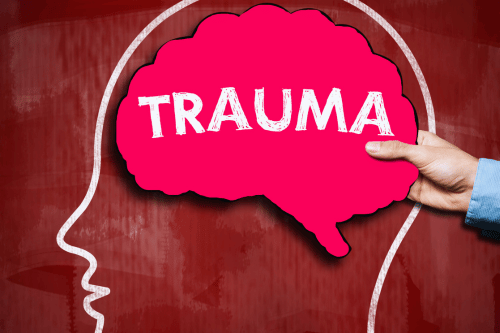

The Childhood Trauma Questionnaire is a validated retrospective measure used to identify traumatic events during early life. This tool focuses on five types of abuse and neglect: emotional abuse, physical abuse, sexual abuse, emotional neglect, and physical neglect. At Sullivan Recovery in Mission Viejo, we use this questionnaire to understand how early trauma may contribute to substance use disorders and mental health conditions in adulthood.
The Childhood Trauma Questionnaire (CTQ) is a widely used screening version developed by Bernstein & Fink. It offers a standardized way to assess adverse childhood experiences through self-report. This tool is especially useful in clinical practice for identifying underlying trauma that may influence treatment planning. Originally introduced as a longer scale, it was later refined to improve practicality in clinical and research settings without sacrificing reliability or validity. The CTQ assesses a broad range of childhood traumas including physical abuse, sexual abuse, and emotional neglect. Its ability to detect trauma exposure even in individuals who may not openly disclose their experiences makes it an essential asset in trauma-informed care at Sullivan Recovery.
The Childhood Trauma Questionnaire-Short Form (CTQ-SF) consists of 28 items covering the five trauma domains. It has been validated across a variety of samples, including clinical sample groups and community sample populations. CTQ-SF scores help clinicians at Sullivan Recovery better assess trauma levels and personalize outpatient treatment. Its psychometric properties, such as internal consistency and confirmatory factor analysis, have proven stable across age groups and cultures. Versions of the CTQ-SF have been successfully applied in Dutch, Chinese, Brazilian, and Nigerian samples, confirming its cross-cultural reliability. The brief format of the CTQ-SF makes it suitable for high-risk groups, such as individuals struggling with substance use disorders, who may benefit from a less time-consuming screening process.

Emotional abuse refers to verbal assaults, humiliation, and psychological manipulation by caregivers. Emotional neglect, on the other hand, involves a lack of emotional support, love, or protection. These experiences in childhood are linked to long-term mental health issues and higher substance use risk. Studies have shown that both emotional abuse and neglect are strongly correlated with depression, anxiety, and low self-esteem in adulthood. These traumas often go unnoticed because they leave no physical marks, yet they can be just as damaging as physical harm. At Sullivan Recovery, recognizing these subtle but impactful forms of trauma allows us to deliver targeted therapies that address both emotional wounds and substance-related behaviors.
Physical abuse includes deliberate harm such as hitting or burning. Physical neglect means failing to meet a child’s basic physical needs, like food, shelter, and hygiene. Sullivan Recovery uses the CTQ to recognize these trauma types and understand how they relate to client behavior and recovery outcomes.
Sexual abuse involves unwanted sexual contact or exposure during childhood. It is one of the most harmful trauma types associated with later mental disorders and substance use disorders. Screening for sexual abuse using the CTQ helps us determine whether trauma-focused therapy is appropriate.
The CTQ demonstrates strong psychometric properties across studies. These include internal consistency, structural validity, and confirmatory factor analysis. These features make it reliable for use in both research and clinical settings like ours at Sullivan Recovery. Its internal consistency ensures that responses across subscales remain stable, even when used in different settings or populations. Additionally, its low measurement error and favorable intraclass correlation ratings confirm its accuracy over time. These strengths support its application as a standard trauma screening tool for clients entering outpatient programs.

The CTQ shows strong convergent validity with other trauma scales, high criterion validity in predicting psychiatric symptoms, and clear discriminant validity among different trauma types. This makes the tool highly accurate in distinguishing between various adverse experiences. Its known-groups validity also allows it to differentiate between clinical and non-clinical groups, adding value in treatment planning. The CTQ has shown strong predictive value for conditions like PTSD, bipolar disorder, and substance use disorders. These validation points reinforce its clinical utility for trauma assessment at Sullivan Recovery.
Studies support a stable five-factor structure for the CTQ, aligning with its five subscales. Measurement invariance across gender and cultural backgrounds—such as in Brazilian samples, Swedish version, German version, and Chinese version—proves the tool’s global applicability. These findings confirm that the CTQ measures trauma consistently regardless of cultural context or demographic differences. It also demonstrates wide usability across a variety of samples, including adolescents, psychiatric inpatients, and high-risk community groups. At Sullivan Recovery, this structural reliability ensures that all clients are evaluated with equal accuracy, regardless of their background.
The CTQ has been translated and validated for multiple cultures, including the Dutch Childhood Trauma Questionnaire-Short Form and the Norwegian version. This allows clinicians to use it in multicultural settings, such as Orange County’s diverse population near Sullivan Recovery.
The CTQ is particularly effective in high-risk groups, including psychiatric inpatients and adolescents in conflict. At Sullivan Recovery, it helps uncover trauma in individuals dealing with drug or alcohol misuse who might not initially disclose past experiences.
CTQ-SF scores help reveal links between trauma and mental health outcomes in both adults and youth. Research connects childhood trauma to bipolar disorder, depression, anxiety, and health among adolescents. These links inform the therapy offered in our outpatient programs.
Traumatic events in childhood, especially sexual or emotional abuse, are known to increase the risk of substance use disorders. The CTQ allows Sullivan Recovery to assess these histories and integrate trauma-informed care into recovery plans.
The CTQ provides a broad range of score values with low standard deviation, making it sensitive to varying trauma levels. A raw score can indicate the presence and severity of specific trauma types. Higher scores often correlate with more severe clinical symptoms.
Positive scores in the CTQ subscales indicate significant trauma exposure. These results guide our clinical team in recommending specific therapies, such as EMDR or cognitive behavioral therapy, to address unresolved childhood traumas.

CTQ studies show that individuals in a clinical sample often report higher trauma scores compared to a community sample. This highlights the importance of trauma screening in treatment settings like Sullivan Recovery, where clients seek help for addiction and emotional distress.
Confirmatory factor analysis supports the CTQ’s structure and scoring method. Structural validity confirms that the items measure what they are intended to assess. These strengths ensure the tool’s effectiveness in addiction and mental health evaluations.
The CTQ demonstrates high internal consistency and intraclass correlation across studies. This reliability ensures that repeated testing yields consistent results, making it a trusted tool in both research and clinical environments.
Systematic review and meta-analysis of CTQ studies show excellent measurement properties. These include low measurement error and strong methodological quality, further supporting the CTQ’s use in evaluating early adverse experiences.
Items in the CTQ reflect exposure to violence and household dysfunction, including domestic violence and caregiver instability. These forms of trauma are common among individuals with substance use disorders treated at Sullivan Recovery.
Validation in Nigerian adolescents and Brazilian samples confirms the CTQ’s utility across cultures. Such research helps expand our understanding of how childhood traumas impact behavior across different populations and regions.
Longitudinal studies link childhood traumas measured by the CTQ with early death in adults. These findings underscore the urgency of early trauma screening and treatment in addiction care and overall health interventions.
The CTQ enhances clinical practice by highlighting trauma patterns associated with mental health and substance abuse. Its integration at Sullivan Recovery allows our team to build personalized, trauma-sensitive outpatient programs.

The CTQ is a vital screening version used in routine psychological evaluations. Critical appraisal of its validity and reliability has made it one of the most trusted tools in trauma-informed care.
With a wide range of applications, from identifying childhood emotional harm to informing therapeutic approaches, the CTQ remains a core tool in both research and clinical settings. Sullivan Recovery incorporates this tool in assessments to provide deeper insights into client needs.
The Childhood Trauma Questionnaire plays a central role in identifying past trauma that influences current behavior and mental health. By using this tool at Sullivan Recovery, we uncover the root causes of substance use disorders and mental health struggles. If you or someone you care about has experienced early trauma and is now facing addiction, our outpatient programs in Mission Viejo are here to help.
1. Psychometric Properties of the Chinese Version of the Childhood Trauma Questionnaire-Short Form (CTQ-SF): This study examines the reliability and validity of the Chinese version of the CTQ-SF, confirming its suitability for assessing childhood trauma in Chinese populations.Source: Child Welfare Information Gateway
2. Validation Study of the Dutch Childhood Trauma Questionnaire-Short Form: This research validates the Dutch version of the CTQ-SF, supporting its factor structure and reliability in distinguishing between clinical and non-clinical groups.ERIC Source: Office of Justice Programs
3. Factor Structure and Reliability of the Childhood Trauma Questionnaire in a Canadian Undergraduate Student Sample: This study explores the factor structure and reliability of the CTQ in a Canadian context, confirming its applicability in assessing childhood trauma among undergraduate students.ERIC ERIC – Institute of Education Sciences
4. Factor Structure, Reliability, and Known-Groups Validity of the German Version of the Childhood Trauma Questionnaire (CTQ): This study assesses the German CTQ’s factor structure, reliability, and validity, confirming its effectiveness in evaluating childhood trauma experiences. Source: Office of Justice Programs
At Sullivan Recovery, as an in-network provider we work with most insurance plans, such as:
And More
If you or a loved one are struggling with mental health challenges or substance abuse, reach out to Sullivan Recovery today. Our team of compassionate professionals is here to support your journey towards lasting well-being. Give us a call at 949-836-7180.
Yes, the CTQ has been used successfully with adolescent populations, including high-risk groups like Nigerian adolescents and adolescents in conflict with the law. Its language is simple and accessible, making it appropriate for youth assessments. Clinicians may supplement it with interviews to ensure accuracy and emotional safety.
While the CTQ was designed for clinical and research settings, it can also be used in non-clinical environments with proper oversight. When administered by trained professionals, it can help identify early trauma and refer individuals to appropriate mental health resources. Caution should be taken to ensure privacy and emotional support.
No, the CTQ is a screening tool, not a diagnostic instrument. It identifies past experiences of abuse and neglect, but it does not provide a diagnosis for PTSD, depression, or other mental health disorders. Clinical evaluation is required for a full diagnosis and treatment plan.
The CTQ-Short Form takes about 5 to 10 minutes to complete. Its brief format makes it efficient for use in outpatient intake sessions, research studies, or during routine assessments. At Sullivan Recovery, we incorporate it into the early stages of treatment planning to better understand each client’s history.